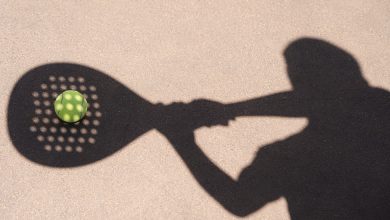Anatomy of a Monique Lhuillier Gown

Before she started her label in 1996, Monique Lhuillier was just a woman shopping for a wedding gown. Unsatisfied with her options, and armed with a degree from the Fashion Institute of Design & Merchandising in Los Angeles, Calif., she started designing them herself.
In the 25 years since, her dresses have become known for their timeless, ethereal quality. “I love everything that gives the illusion of long, lean and elegant,” said Ms. Lhuillier, who just released “Monique Lhuillier: Dreaming of Fashion and Glamour,” as well as a line of engagement rings and wedding bands with Kay Jewelers.
As for the process behind that illusion: It takes an average of 15 people — patternmakers, a design team, cutters, sewers, hand finishers, inspectors — and 1,000 hours to make one gown in Ms. Lhuillier’s platinum collection. The most time- and labor-intensive of the three she creates, not including her bespoke work, this line is also the priciest, with dresses starting at $12,000.
Before that clock even begins to tick, there must first be a design. But for Ms. Lhuillier, even before that, there comes a mood board. It might include photos of architecture or far-flung destinations, swatches of fabrics and textiles and anything that helps convey to her team what her intentions are for the season.
[Sign up for Love Letter and always get the latest in Modern Love, weddings, and relationships in the news by email.]
Then, she begins to drape, using materials that she returns to every season, like silk organza and chiffon. “I love to design in 3-D,” she said. “So, I have it transform in front of me. Then I work on the skirt. I put all the crinoline underneath to show the amount of volume that I want.”
The fabrics Ms. Lhuillier uses are sourced from around the world — India, France, Spain, Switzerland, Italy and Portugal. Her lace comes predominately from France and Asia, and the majority of the crystal work and embroideries she designs are crafted in India. She develops her prints in-house, which are then produced at a mill in Italy.
Once Ms. Lhuillier has “somewhat of an idea” of what she likes, she calls in her patternmaker to share with her the draping on the form. “Then she takes it away from me and she drapes the whole thing from top to skirt, and then she says, ‘Is this what you had in mind?’”
The next step is to bring in her house model, allowing Ms. Lhuillier to see how the fabric moves. “Then I say, ‘OK, I love this’ or ‘Bring it down,’ or ‘I want a different neckline,’ because fit is everything.”
From there, her patternmaker determines how to technically build the dress, which is followed by multiple fittings with her team. “It starts with a muslin and then we start integrating the real fabrics.” Some designs will drop along the way, while multiple others may be combined into a singular design.
Once Ms. Lhuillier approves the draped look, the patternmaker takes all that fabric, marks it and transfers the pattern to paper. Some dress patterns, like the one for “Secret Garden,” a blush, off-the-shoulder, silk organza gown with a textured skirt, can have up to 75 pieces.
The paper pattern is then taken to the cutters to cut the actual fabric, before moving to a bundler who confirms that everything for the corset and the dress is there. The bundler also examines the fabric, “making sure everything is flawless,” according to Ms. Lhuillier.
Then the bundler packages the pieces, which will include everything needed to make the gown, from fabrics to boning, and hands off the bundle to the person who will machine sew the dress, referred to as “the operator.” The dresses are sewn first by machine and later by hand. “Once we have that shape, then we put it on the model again and check the stitching,” Ms. Lhuillier said.
It then moves to the hand-finisher who does all of the handwork, including attaching the embroidery, lace, buttons and hooks.
“Then we put it back on the model and we fit it one more time,” at which point, Ms. Lhuillier said, a design may be dropped if she feels it’s not working.
Once the samples are complete, they are photographed in a way that Ms. Lhuillier hopes will speak directly to the bride — for example, “a bride in an organza print dress running on cobblestones, Lake Como in the background,” Ms. Lhuillier said.
She said she began this particular process over the last five years, because she’s learned that the bride “needs to see the dress in its setting. It becomes more powerful.”
When all of the roughly 29 gowns in a single collection are completed, they are shipped to Ms. Lhuillier’s showroom in New York City, where informal modeling is done for buyers and editors. Buyers then place orders for dresses that will arrive in about five months and serve as samples for brides to try on.
Upon receiving those orders, Ms. Lhuillier’s team takes the pattern for each design, which generally fits a 5-foot-10, size 2 runway model, and creates a new pattern, changing the scale to fit women of a more average height and size.
When a bride chooses a gown, her measurements are taken and an order is placed, preferably six months in advance because the process for making that gown is almost identical to when the original sample was created. “It’s made one of a kind, here in our factory,” Ms. Lhuillier said, which is in downtown Los Angeles.
A ticket, which Ms. Lhuillier described as “like a tracker,” has accompanied each dress throughout its journey. “Everybody knows which cutter, which operator, which hand-finisher touched that dress.”
The journey ends when the dress is delivered to the shop from where it was first ordered and, at long last, into the hands of the bride.





